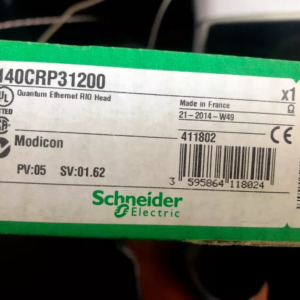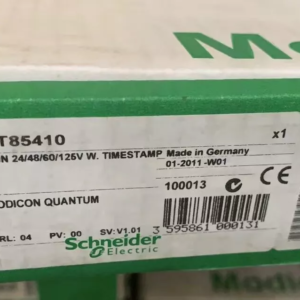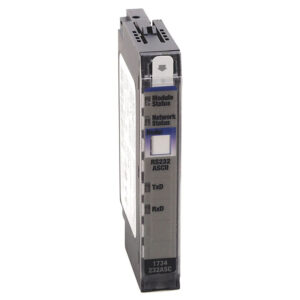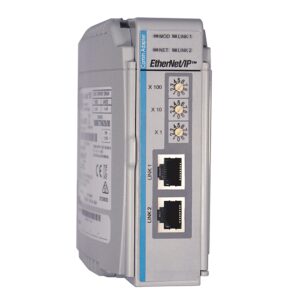Your Trustful PLC Module Supplier
Discover the power of advanced technology with Industrial Automation Products from Yingwangxin. As a leading automation products company, our product range includes drives, PLC modules, inverters, HMI’s, motors, control systems, power supply, circuit breaker and more, all designed to enhance operational efficiency. With products from leading brands like Siemens, Mitsubishi, Allen-Bradley,ABB and etc, we offer solutions that are reliable, high-quality, and tailored to your specific needs.
Showing 1–12 of 156 results
-
PLC
140CRA93200C New Sealed Modicon RIO HEAD Module 140-CRA-932-00 140CRA93200
Read moreRated 0 out of 5 -
Allen-Bradley
1734-232ASC New Allen-Bradley POINT IO RS-232 ASCII Interface
Read moreRated 0 out of 5 -
Allen-Bradley
1734-4IOL New Allen-Bradley POINT IO 4Channel IO Link Master Module
Read moreRated 0 out of 5 -
Allen-Bradley
1734-8CFGDLX New Allen-Bradley POINT IO 8 Point Combination Module
Read moreRated 0 out of 5
REQUEST A QUOTE FOR MORE DETAILS
All You Need to Know About PLC Module
PLC is a digital electronic device with a microprocessor, a digital logic controller for automatic control, which can load control instructions into the memory at any time for storage and operation.The programmable controller is modularly composed of internal CPU, instruction and data memory, input and output unit, power module, digital and analog units. PLCs can receive (input) and send (output) many types of electrical or electronic signals and use them to control or supervise almost all kinds of mechanical and electrical systems.

Features of PLC Module
Central Processing Unit (CPU)
The "brain" of the PLC that updates inputs and outputs.
Function Block Diagram (FBD)
A fundamental language for PLC programmers that allows them to graphically program functions together.
Power supply
Many PLCs require a power supply, and modular systems often integrate it.
Rack or chassis
The PLC rack is similar to a car's chassis, with the CPU, I/O modules, and power source connected to it.
Structured text
A popular programming language for PLCs that's easy to transition to for those with a background in traditional programming languages.
Input/Output (I/O) modules
PLCs have input modules that detect the state of input signals from sources like switches, sensors, and push-buttons. Output modules control devices like lights and relays.
Programming device
A device that feeds a program into the PLC's memory so it can perform the desired operation. Each PLC comes with its own programming

How Do PLC Module Work?
When the PLC is put into operation, its working process is generally divided into three stages, namely input sampling, user program execution and output refresh. Completing these three phases is called a scan cycle. Throughout the operation, the PLC’s CPU repeats the above three stages at a certain scanning speed.
In the input sampling phase, the PLC reads in all input states and data sequentially in a scan mode and stores them in the corresponding units in the I/O image area.
During the user program execution phase, the PLC always scans the user program (ladder diagram) sequentially from top to bottom.
When the scanning user program is completed, the PLC enters the output refresh phase. During this period, the CPU refreshes all output latch circuits according to the corresponding status and data in the I/O image area, and then drives the corresponding peripherals through the output circuit. At this time, it is the real output of the PLC.
What Are Applications of PLC Module?
A programmable logic controller is an electronic system for digital arithmetic operation designed for use in industrial environments.It uses a class of programmable memory for its internal stored programs to perform user-oriented instructions such as logic operations, sequence control, timing, counting and arithmetic operations, and to control various types of mechanical or production processes through digital or analog input/output.The programmable logic controller and its related external devices are designed according to the principle of easy integration with the industrial control system and easy to expand its functions.

Modular PLCs
These PLCs are flexible and can be made up of multiple CPUs and I/Os, which can be added or removed as needed.
Compact PLCs
These small, modular PLCs are designed for space-constrained applications, such as machine control or process monitoring.
Fixed PLCs
These PLCs are designed for specific tasks and are not easily modified once installed. They are cost-efficient for many repetitive tasks.
Input/output (I/O) modules
These modules connect the PLC's CPU to the outside world, the machines. Input modules detect the state of input signals from sources like switches, push-buttons, and sensors. Output modules control devices like lights and relays.
Analog input modules (AINs)
These modules act as the front end between the physical real world parameters and the fully digital control unit.
Things to Consider:Choose PLC Modules
When choosing PLC modules, key factors to consider include: application requirements (number of inputs/outputs, processing speed), communication protocols needed, environmental conditions, memory capacity, CPU speed, scalability, cost, redundancy requirements, compatibility with existing systems, and the specific functions needed like motion control or safety features; essentially, ensuring the PLC module can handle the complexity of your control system while fitting within your budget and operating environment.
#1 I/O capabilities
How many digital and analog inputs/outputs are required for your application?
#2 Processing power (CPU speed)
Does the PLC have enough processing speed to handle the required control tasks?
#3 Memory capacity
Is the available memory sufficient for storing program logic and data?
#4 Communication protocols
Which communication protocols (e.g., Ethernet, Modbus, Profibus) need to be supported for interfacing with other devices?
#5 Environmental considerations
Can the PLC operate in the expected temperature, humidity, and vibration conditions?
#6 Scalability
Can the system be easily expanded to accommodate future needs?
#7 Redundancy
Is redundancy required for critical applications to ensure continuous operation in case of component failure?
#8 Programming language compatibility
Does the PLC support the preferred programming language (e.g., ladder logic, structured text)?
#9 Cost
Does the PLC fit within your budget?
#10 Special functions
Are any specific functions needed like motion control, PID control, or safety features?
Request A Free Quote
We'd like to work with you
Send us a message if you have any questions or request a quote. Our experts will give you a reply within 24 hours and help you select the right valve you want.
- +86 175 0301 5773
- +86 189 2656 9286
- info@yingwangxin.com














